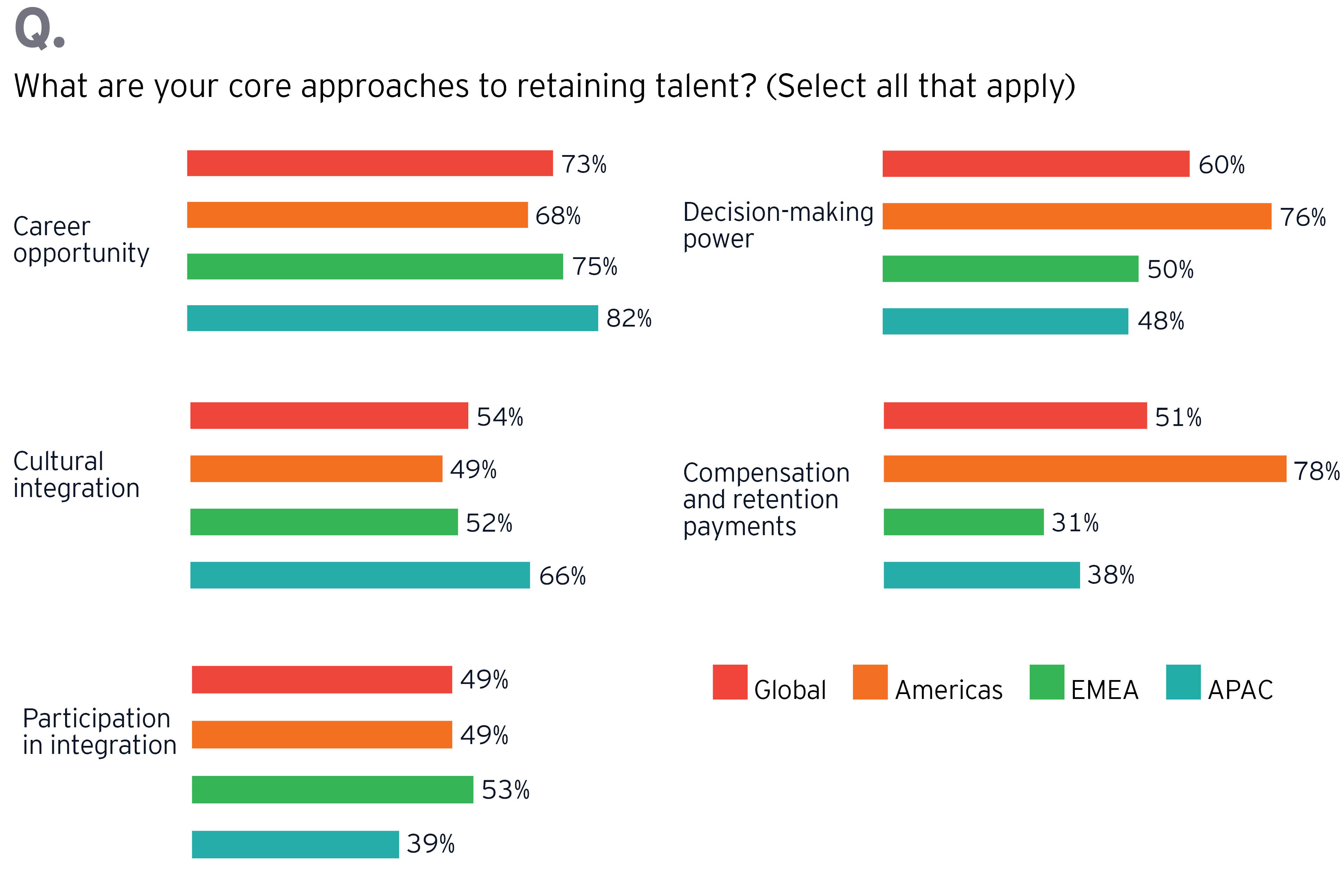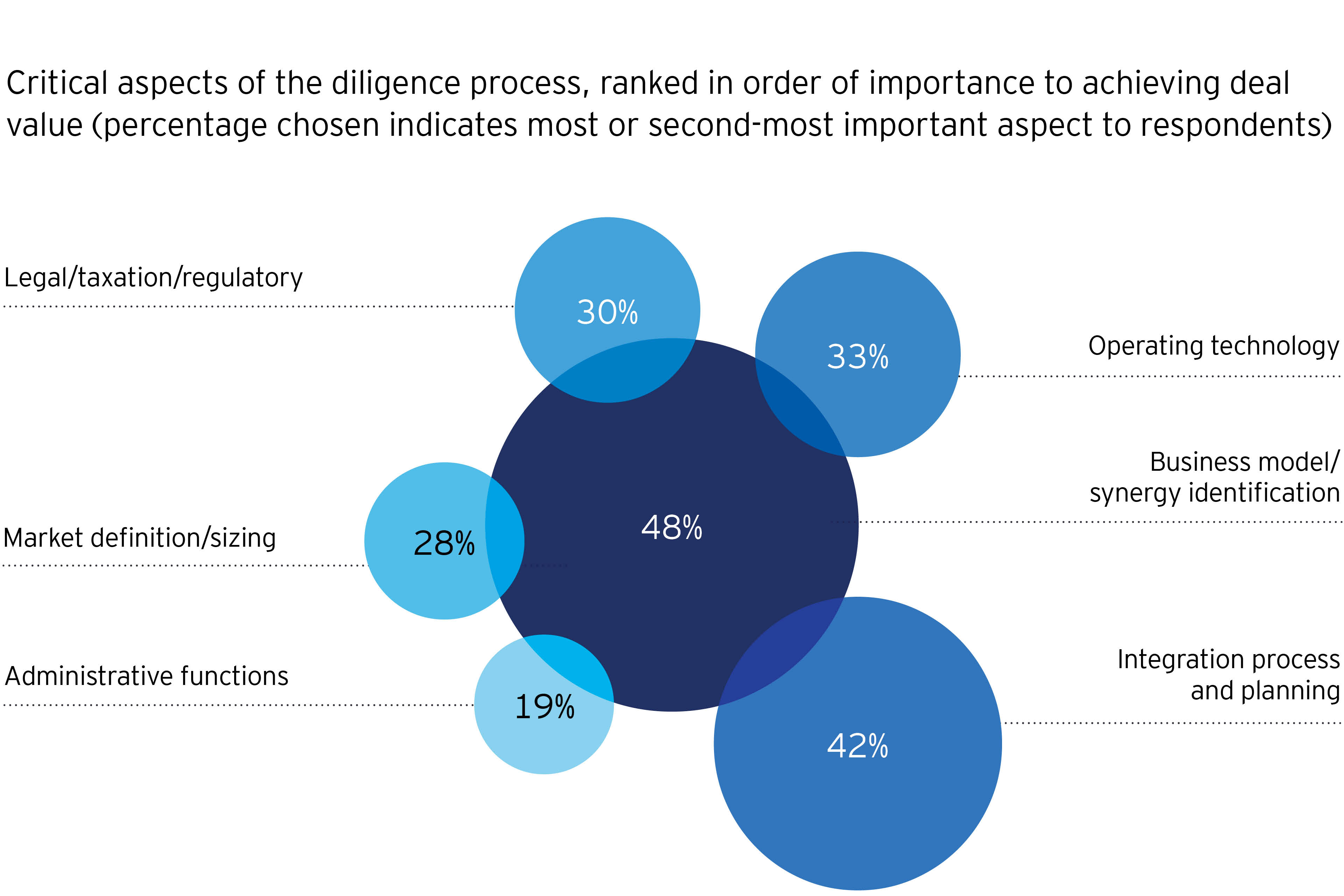Customizing M&A diligence and integration priorities to a specific deal rationale promotes long-term growth.
Companies often apply the same M&A diligence and integration playbooks to all deals, rather than tailoring activities to the strategic rationale behind the particular transaction. As more than half (52%) of companies expect to actively pursue M&A in the next 12 months, according to the EY Global Capital Confidence Barometer survey, it’s critical for them to align their deal processes with their growth strategies, whether it’s to acquire new capabilities, consolidate or grow their products or their market share.
In the recent EY Buy & Integrate global pulse survey focused on the acquisition process, inadequate diligence was noted as a major challenge to achieving the targeted deal value. Of the 300 chief financial officers, chief operating officers and corporate development officers who participated, 25% cited this as a key challenge, second only to regulatory and geopolitical issues (37%).
Meanwhile, when it comes to M&A integration, the two most frequently cited pain points include talent assessment or retention (23%) and technology integration (20%).
More than 70% of executives said their most significant acquisition met expectations for value creation, which is consistent with what we see in practice. But only 7% said their diligence accuracy, in particular, exceeded expectations. Clearly, there is more work to do. If companies fail to identify and focus the majority of their time on the most critical items during the fast-moving diligence process, big value drivers can be missed.
Our c-suite survey also revealed that the most effective strategies to ensure companies met or exceeded value creation and synergy realization goals were:
- 75% looked to procurement as an area to achieve near-term cost synergies.
- 58% started integration earlier.
- 58% used tools and technology to maintain timelines, manage work streams and capture synergy targets.
- 54% set more aggressive synergy targets.



